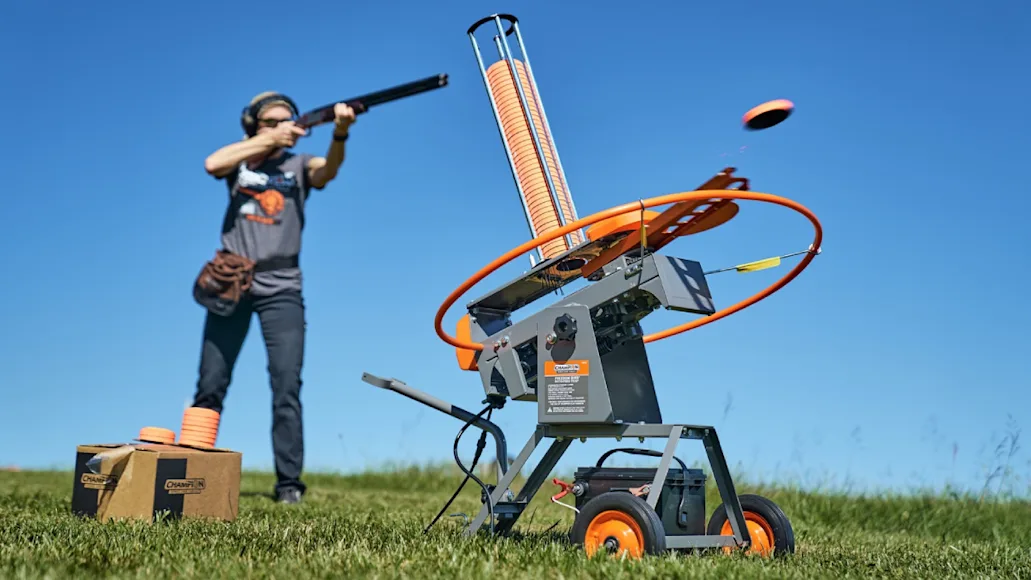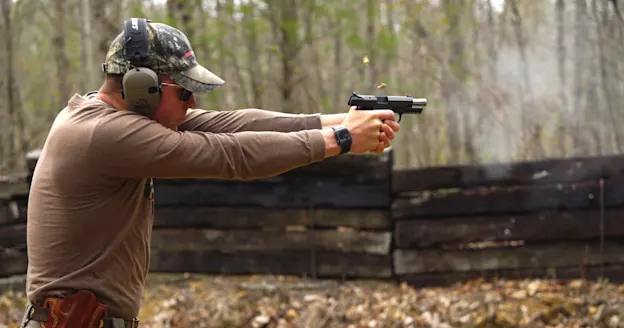We may earn revenue from the products available on this page and participate in affiliate programs. Learn more ›
A clay pigeon thrower makes shotgun shooting more fun and more affordable, and it makes you a better shot. It lets you throw clay targets that test your scattergunning skills. With your own trap, you can shoot when you want to—not just when gun clubs are open—and you don’t have to pay range fees. As long as you have access to a few acres, you can set up a clay pigeon thrower for family fun or friendly competition. You can use it to teach new gun owners proper technique or to get in some serious shooting practice to hone your accuracy.
Over the course of 30 plus years of writing about shotguns, I have had the opportunity to use and observe most clay pigeon throwers on the market. There are plenty of choices in clay target throwers depending on how much you want to spend and what you want a thrower to do. The following guide will help you find one of the best clay pigeon throwers for you.
The Best Clay Pigeon Throwers
Best Overall: Champion Workhorse Electronic Trap
Best Budget: MTM EZ-3 Clay Target Thrower
Best for Shooting by Yourself: Trius One Step
Best Manual: Do All Outdoors Backyard 3/4 Cock Clayhawk
Most Versatile: Do-All Outdoors Clayhawk Full Cock Trap
Best Clay Pigeon Throwers: Reviews and Recommendations
Best Overall: Champion Workhorse Electronic Trap
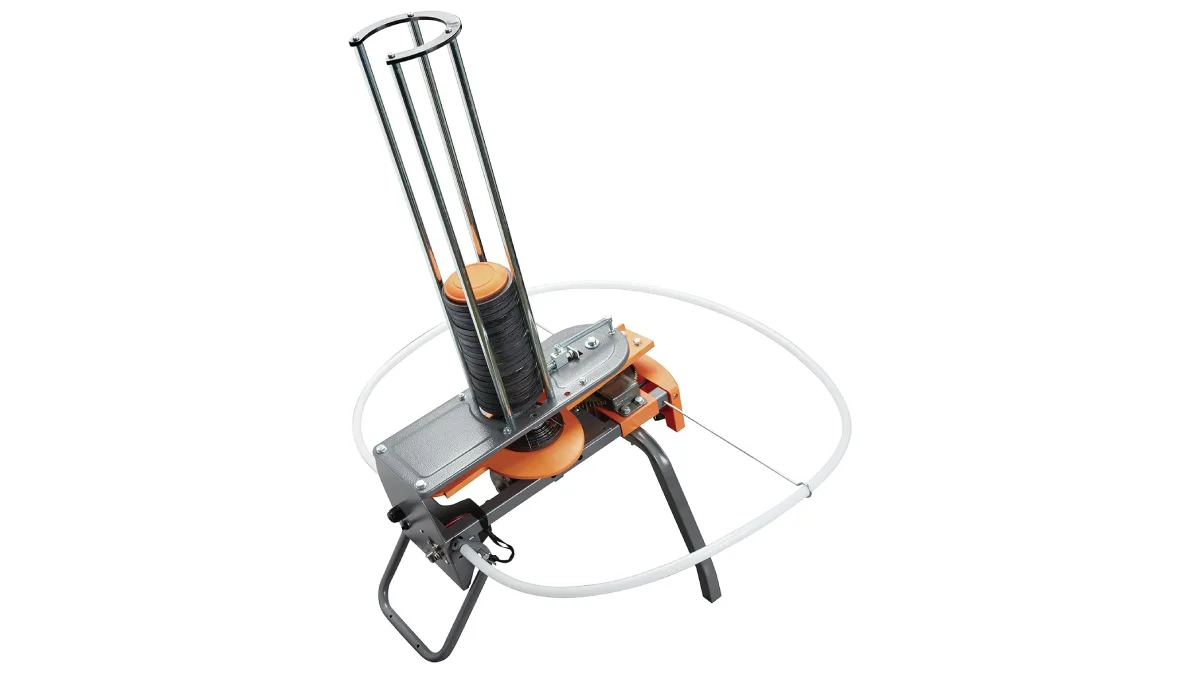
Specs
Power: Battery
Weight: 32 pounds
Capacity: 50 standard clays
Pros
Great price
Throws targets up to 75 yards
Holds 50 clays
Lightweight for an electric thrower
Upgrade accessories like wireless remote and cart are available
Cons
Safety ring and piece at the top of the magazine are plastic and subject to breaking
Requires a marine battery that weighs more than the trap
Only throws single targets and only accepts standard size clays
The Champion Workhorse does nothing but work. These traps deliver trouble-free performance year after year. Once attached to a deep-cycle battery they will throw clays up to 75 yards and you can adjust the elevation through a 30-degree range, although speed is not adjustable.
You can stack up to 50 standard size clays in the magazine and launch them one at a time using the 25-foot cord and foot pedal that comes with the unit. The pedal makes it a great trap for practicing alone. And, if you get more serious about your practice (or about your fun), you can upgrade it with an oscillating wobble accessory to throw random angles and heights. You can also add a wireless remote which allows you to set the trap up to throw crossers or incomers.
Although Champion offers an outdoor cover for the Workhorse, I would keep mine inside between uses if there was any chance of rain or snow. The target magazine pops off easily, making it no problem to remove and transport the trap in a car trunk.
Best Budget: MTM EZ-3 Clay Target Thrower
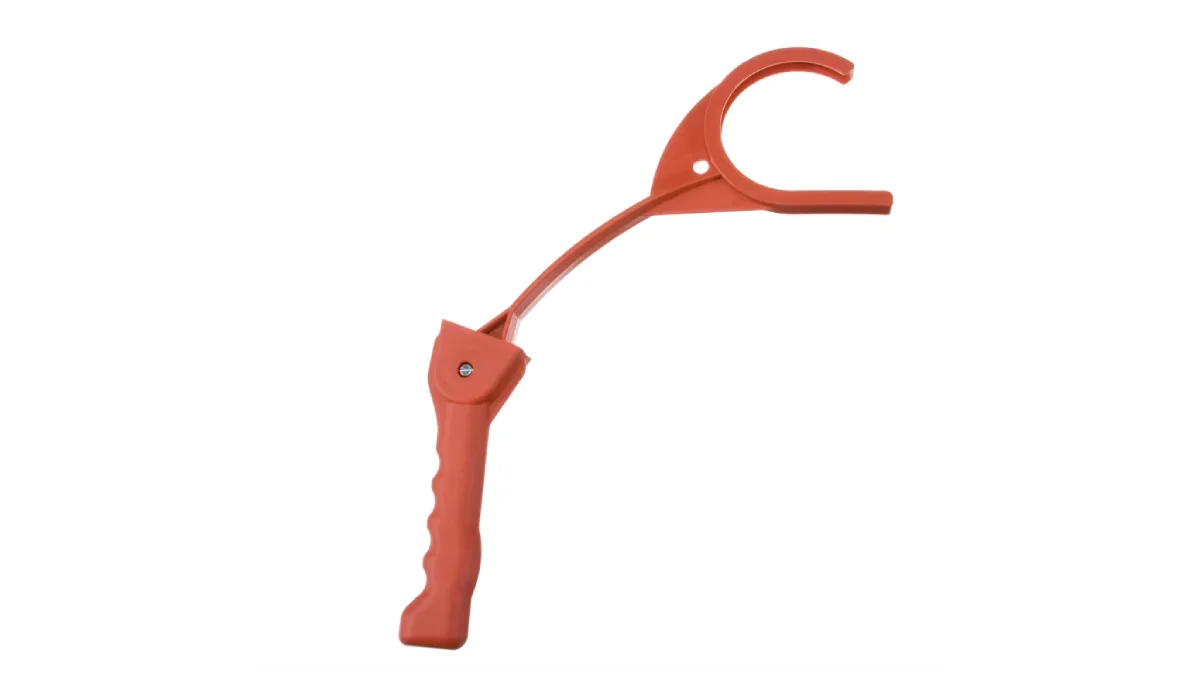
Specs
Power: Hand
Weight: 14 ounces
Capacity: One at a time
Pros
Cheapest thrower on the market by far
Easy to take anywhere
Redesigned hinged arm makes it easier to throw targets farther
Cons
Takes practice to throw consistent targets
Some may not be able to throw with it
Simple arm-powered clay target throwers have been around forever. They are cheap, portable, and a staple in hunting camps for informal practice before and after the hunt. The old-style one-piece throwers could be tricky to use. Not everyone had the arm strength or coordination to use them. By adding a hinge to the arm and making the one-piece thrower into two, MTM made the EZ Throw 3 much easier to use. Younger or weaker users can throw a good target. People who could use the old style will find the new version throws birds much farther. This thrower is completely ambidextrous, too, so right left-handers alike can use it.
The birds don’t always fly straight out of the EZ Throw 3 and the targets can be erratic. That can make this more fun for experienced shooters, but a little frustrating if you’re trying to teach a newcomer, which is most easily done with a consistent throw. You’re also limited to standard-size clays only, and it only throws one at a time. You can’t throw doubles. But for what it is, the EZ Throw 3 is a great product and a definite improvement over older models.
Best for Shooting by Yourself: Trius One Step
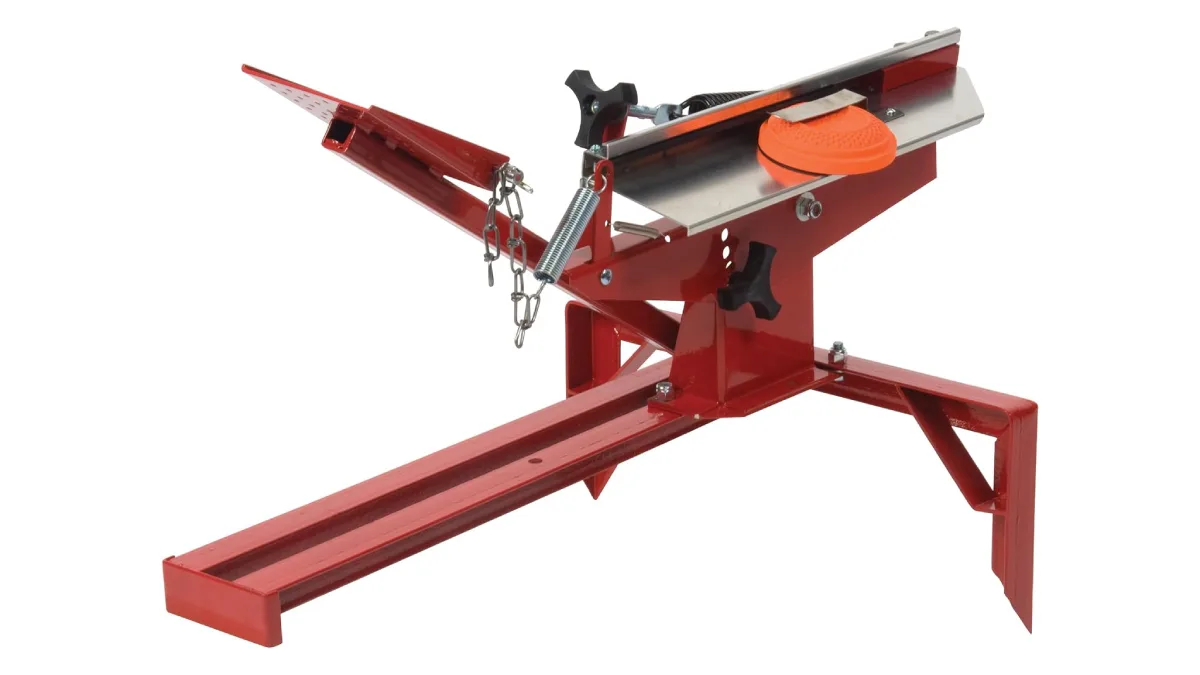
Specs
Power: Spring
Weight: 21 pounds
Target Capacity: Throws singles and doubles
Pros
Portable at 21 pounds
Throws singles or doubles
Foot pedal leaves your hands free
Cons
Only throws straightaway targets
Has to be manually cocked
Trius is an old and trusted name in traps, and the One Step is their latest model. Unlike other manually triggered spring traps, you don’t cock this one, then pull a string to release it. You load one or two targets on board, get ready to shoot, and step on the pedal to both cock and release the arm in one motion. It’s simple, and it works.
You can adjust the elevation of the trap to throw low grass-cutters or, with the aid of the high angle clip to keep birds from slipping off, very high rising targets. As with most spring traps, you can adjust spring tension to change the target speed. You can also stack two targets for a piggyback double and the pair will separate in flight. Because you stand on this trap to operate it, there’s no need to bolt it to a tire or a sheet of plywood, nor to pound the sharp ends of the arms into the ground. You set it down, put clays on the arm, and step on the pedal. It’s that simple to use.
Best Manual: Do-All Outdoors Backyard 3/4 Cock Clayhawk
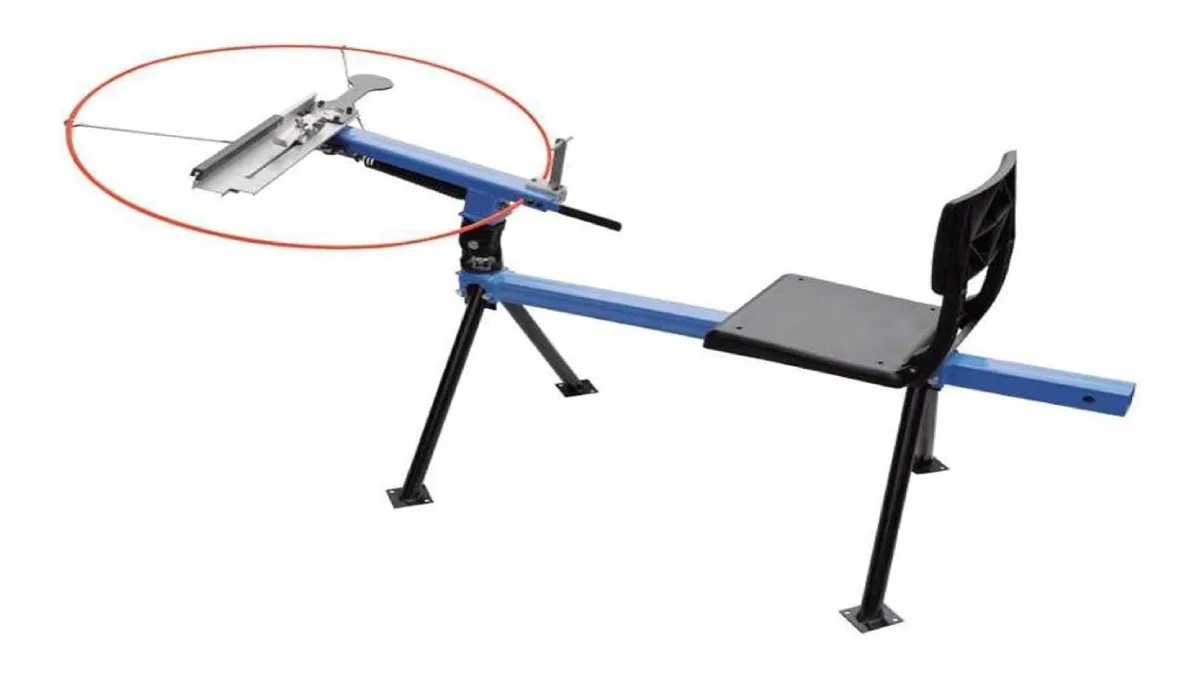
Specs
Power: Spring
Weight: 22 pounds
Capacity: One or two targets, holds any size from mini to 110mm international
Pros
¾ cock requires less strength and is safer to operate
Solid construction
Trap can be tilted and angled and can even throw rabbit targets along the ground
Cons
Assembly is required and instructions are poor
The ¾ cock design of this trap is the same as you see in sporting clays courses that still use manual traps. You only have to push the arm a short distance to cock it rather than pull it back through 180 degrees, so it’s both easier and somewhat safer since it can’t slip out of your fingers. The tripod design is made to be anchored to the ground with the included tent-like stakes or you can mount this to a piece of plywood or something heavier if you plan to leave it out and in one place.
You can tilt the trap up, down, or sideways. That not only allows you to throw tricky curving targets but also to turn it perpendicular to the ground to throw bouncing rabbits (special targets required) or curving chandelles. It can also throw doubles. It’s a versatile, durable trap—and while it costs more than many inexpensive full-cock versions, it is easier to use and it will outlast them.
Most Versatile: Do-All Outdoors Clayhawk Full Cock Trap
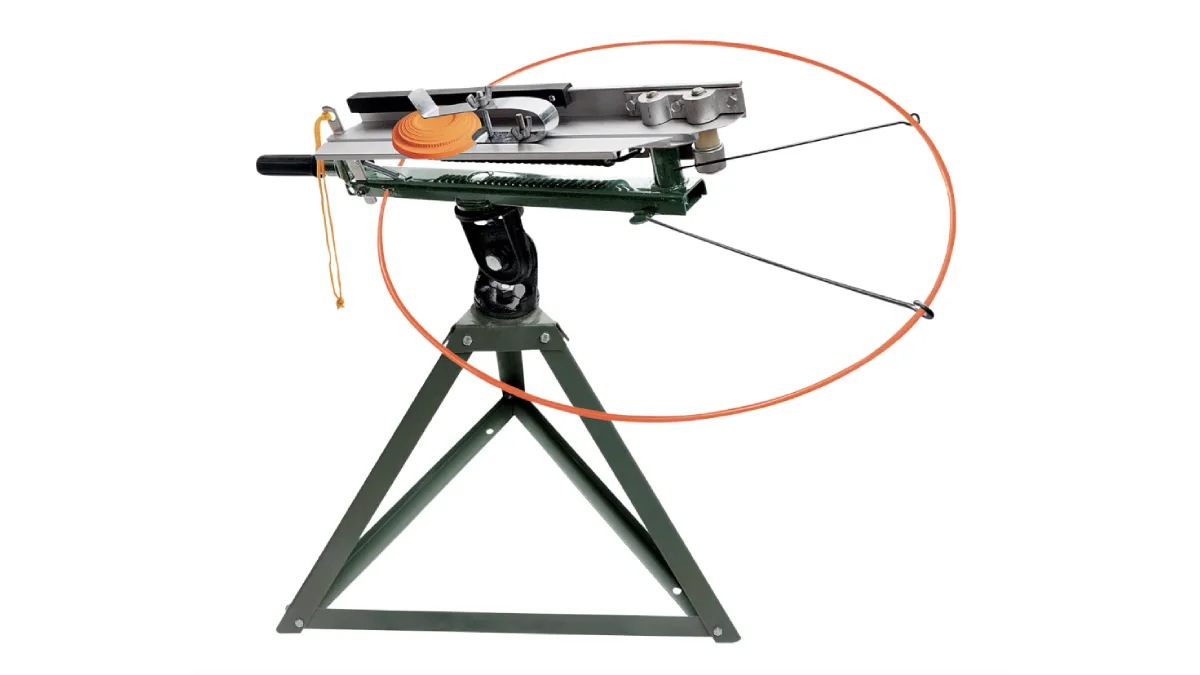
Specs
Power: Manual
Weight: 15 pounds
Capacity: Singles and stacked doubles
Pros
Can throw both singles and doubles
Three-pivot mount allows you to throw at any angle
Relatively light
Cons
Can’t load multiple clays at once
The biggest draw (or should we say pull) of the Do-All Clayhawk Full Cock is the three-pivot mount, which allows you to throw clays at almost any angle and any direction. Tilt it up, tilt it down, tilt it left, tilt it right—it gives you so much versatility when practicing your shots. This manual model can also throw both singles and stacked doubles.
It’s easy to use and sits high enough off the ground that you can operate it sitting comfortably in a chair. You can slide the adjustable clip up and down to adjust the speed and direction of your target, and reloading takes just seconds. We also like how stable this Do-All thrower is, with three long and sturdy spikes that dig deep into the ground, so you can shoot from any terrain.
How We Tested the Best Clay Pigeon Throwers
In choosing which throwers to feature on this list, I pulled from my own experience shooting clays along with the knowledge of skeet shooting professionals in the industry. I evaluated each model on the following:
Reliability: Nothing ruins a day of target shooting like a thrower that doesn’t work or breaks clays. These machines will work as they are supposed to.
Ease of Use: Clay pigeon throwers that are difficult to use are frustrating and can cause injury. While you always have to be careful around throwers, the throwers I chose are all easy to use compared to others in their category.
Durability: Flimsy clay pigeon throwers won’t hold up under heavy use. All of the throwers here are proven to work well over time.
Value: Shooting is a costly sport, but that doesn’t mean you should throw money away. Getting a good return for your money is very important. I looked for good values in clay target throwers, and it’s no coincidence that the best value, the Champion Workhorse
, was also named best overall.
Clay Pigeon Thrower Buying Guide
You can spend as little as $10 on a simple hand thrower, or well over a thousand dollars on a professional quality machine. There are plenty of options in between, too. To help narrow down your choices, think about these questions.
Size and Weight
Clay pigeon throwers vary from simple hand-held plastic throwers to 65-pound commercial grade machines that also require a 50-pound marine battery. Obviously, the hand thrower is much more portable while the commercial machine is best left in place, or wheeled a short distance on a cart. A traditional hand-cocked spring thrower transports easily, too, but any time you add a battery, you have a heavy weight to carry.
Power
Unless you have three hands, it’s hard to throw a target and shoot it by yourself. There are traps, both electric and mechanical models, that you can use to shoot alone, however. Those traps can be activated by foot pedals so you can throw targets hands-free.
Target Type
Most people use trap throwers for straightaway targets like the type you might see in trap shooting or upland bird hunting. If you want to practice other angles or more difficult shots, you can stand far behind the target or set up for crossing or even incoming shots to resemble ducks and doves. This will require a machine that can be operated remotely, either with a long cord or wireless remote control.
Experience Level
Clay pigeon throwers are great for training young shooters, but if you want to shoot, too, you will have to make sure the machine can be operated safely by young hands. It takes strength to cock some manual spring clay pigeon throwers, and the fast-moving metal arm of the trap can cause injury. Some young people may not be able to throw birds with simple throwers powered by arm strength. Make sure to consider user ability and operation.
Capacity
If you are serious about shooting practice, you need a machine that will hold up over the long haul. While manual traps can last forever, some electric models stand up to heavy use better than others. Also, electric throwers have varying target capacity, which means you can throw more birds without reloading with some machines. There are electric throwers that hold 30 clay birds or less, while some commercial-grade throwers with carousels might hold 250.
FAQs
Q: How do you set up a clay pigeon thrower?
Set up a clay pigeon thrower in an area that allows at least 250 yards in front of the thrower for a safe shot fall zone. Limit your ammunition to shot sizes 7 ½ or smaller or it will carry farther. Many lighter weight traps will have to be staked or anchored in some way so they don’t flip over from the force of the arm when it releases. Cock and load it safely, staying behind the arm whenever possible, and be sure anyone cocking a manual trap is strong enough to cock it. The puller should stand behind the shooter when they throw the clay. If you have a long cord or a remote it’s safe to set the thrower in such a way that it throws crossers or incoming targets.
Q: How does a clay pigeon thrower work?
A clay pigeon thrower is basically an arm with a spring attached to one end. Cocking the arm stretches the spring. Releasing it lets the spring snap back. The arm travels in an arc and throws the target. All clay pigeon throwers work that way. Some are manual and have to be cocked by hand, some are automatic, and powered by batteries. Manual traps have to be reloaded every time while automatic throwers have magazines you can load with up to several hundred targets. You can adjust the tension of the spring to change the target speed and tilt the body of the trap to change its elevation. Some traps also can be canted from side to side.
Q: How do you load a clay target thrower?
With automatic traps you have to load the correct size target (most often a standard 108mm clay) into the magazine or carousel. Fill it to the top, and start shooting. With a manual trap, you have to know how to load a clay target thrower. Most will accept any type of clay, including smaller midis and minis. Where you set the clay on the arm affects which direction it flies. Many traps can throw doubles. If you set two clays side by side on the arm they will fly at different angles. Stack them and they will separate but fly in the same direction. For a fun double, nest a mini underneath a standard. The mini will stay inside the standard until the larger target is broken, then fly on its own. Many manual traps have a “high angle clip” to prevent targets from sliding off the arm when you set the trap to throw very high birds.
Q: Is a clay thrower safe?
Clay throwers are safe in the same way guns are safe. If you treat them properly with respect and common sense, they are completely safe to use. They can also hurt you if you’re careless. The arm of any thrower whips around very fast. Cock throwers from behind the arm, not in front. If possible, release the arm on an electric thrower if you have to work on it at all. Stay behind throwers, too. Clay pigeons come off the arm traveling up to 50 mph and you don’t want to get hit by one. Sometimes, too, clay pigeons break on the arm, and the shards are sharp enough to cut skin. Be sure to stand behind the thrower, not in front.
Q: What is the best clay pigeon thrower?
The best clay pigeon thrower is the one that suits your needs. Every one highlighted here works for a slightly different purpose. While mechanical clay pigeon throwers work well, serious shooters should consider stepping up to a machine like the Champion Workhorse. Besides allowing you 50 shots before you have to reload it, it can be moved all around and operated remotely, greatly increasing the variety of shots you can practice. For that reason, it is our choice as the best clay pigeon thrower.
Why Trust Us
For more than 125 years, Field & Stream has been providing readers with honest and authentic coverage of outdoor gear. Our writers and editors eat, sleep, and breathe the outdoors, and that passion comes through in our product reviews. You can count on F&S to keep you up to date on the best new gear. And when we write about a product—whether it’s a bass lure or a backpack—we cover the good and the bad, so you know exactly what to expect before you decide to make a purchase.

